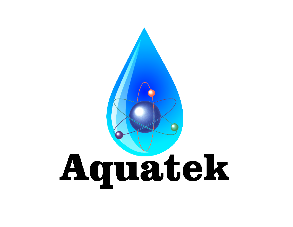Glossary of water terminology and definitions-d
Dealkalization
A process for the reduction of alkalinity in a water supply. It is generally accomplished by a chemical feed processor combined cation and anion exchange systems.
Deashing
The removal from solution of inorganic salts by means of adsorption by ion exchange resins of both the cations and the anions that comprise the salts.
Dechlorination
The removal of excess or free chlorine from a water supply by adsorption with activated carbon or by catalytic type filter media.
Decrosslinkage
The degradation of an ion exchange resin structure by destruction of the crosslink polymer as the result of aggressive attack by chlorine, ozone, hydrogen peroxide, or heat. Decrosslinking causes increased moisture content in an ion exchange resin and the physical swelling of the beads.
Degassing
The removal of dissolved gasses from water such as carbon dioxide, methane, hydrogen sulfide, and oxygen. This can by done by subjecting the water to below atmospheric pressure, or by passing air through the water at atmospheric pressure.
Deionization
The removal of the ionized minerals and salts (both organic and inorganic) from a solution by a two-phase ion exchange procedure. First, positively charged ions are removed by a cation exchange resin in exchange for a chemically equivalent amount of hydrogen ions. Second, negatively charged ions are removed by an anion exchange resin for a chemically equivalent amount of hydroxide ions. The hydrogen and hydroxide ions introduced in this process unite to form water molecules. The term is often used interchangeably with demineralization. The cation resin is regenerated with an acid and the anion resin is regenerated with sodium hydroxide (caustic soda).
Delta P
The pressure drop or loss in psi between the inlet and the outlet of a water conditioner as the water flows.
Density, Apparent (Density, Bulk)
The mass under specified conditions of a unit volume of a solid sorbent including its pore volume and inter-particle voids.
Desalination
The removal of dissolved inorganic solids (salts) from a solution such as water to make it free of dissolved salts. Typically accomplished by reverse osmosis, distillation, or electrodialysis.
Detergent
Usually refers to synthetic detergent, but can be any material with cleansing powers such as soap, alkaline materials, synthetic detergents, solvents, and abrasives. Synthetic detergents are known as surfactants which foam and act like soap but are not made from fatty acids and lye.
Dialysis
The separation of components of a solution by diffusion through a semi-permeable membrane which is capable of passing certain ions or molecules while rejecting others.
Dolomite
A carbonate mineral of calcium and magnesium found in nature in extensive beds of compact limestone and marble that are rich in carbonate.
Drain Line
A pipe or conduit from a water conditioning unit used to carry backwash water, regeneration wastes and/or rinse water to a drain or waste system by gravity.
Drinking Water Standards
National Primary Drinking Water Standards are established by the U.S. Environmental Protection Agency (EPA) are health related and establish the maximum contaminant levels (MCL's) for regulated substances in drinking water. A MCL is the highest permissible level of a contaminant allowed in water delivered to the consumer's tap. These standards relate to public water systems. National Secondary Drinking Water Standards are also issued by the EPA and pertain to aesthetic characteristics of water and are recommended only. Drinking Water Standards
DWV
Abbreviation for Drainage, Waste, and Vent. A name for copper or plastic tubing used for drain, waste, or venting pipes.
